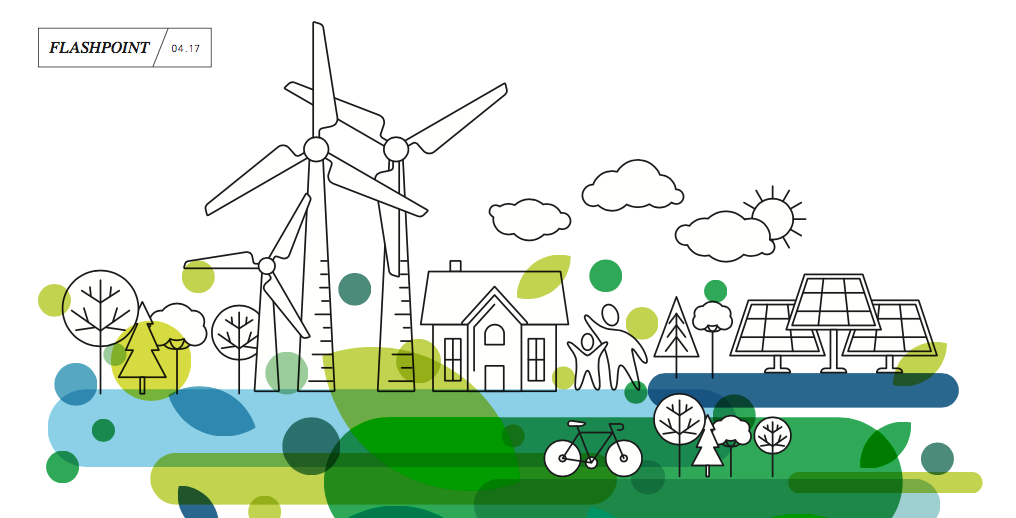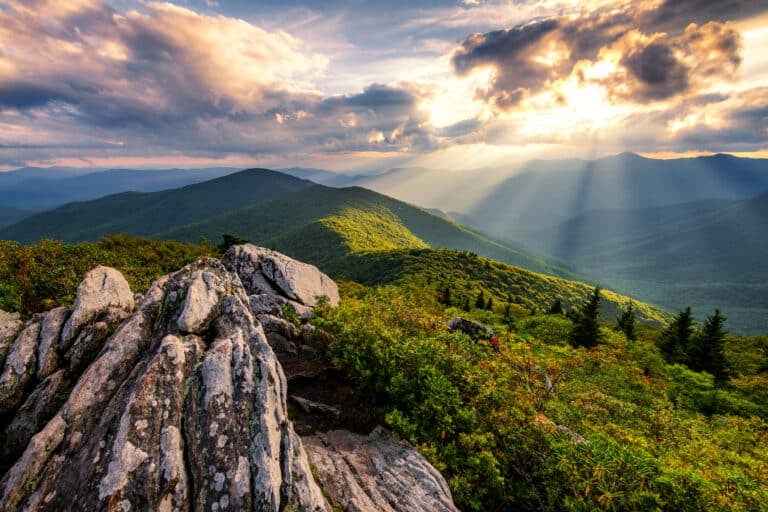It’s the year 2050. Solar panels and wind farms abound and all 50 states plus D.C. rely entirely on renewable energy sources. Is this wishful thinking imagined by well-meaning environmentalists or a realistic vision of the country weaning itself from centuries-long dependence on fossil fuels? For Stanford University professor and researcher Mark Jacobson, the answer is clear.
“It’s not only feasible—it’s necessary,” Jacobson said. “It’s the only solution to the problems of catastrophic global warming and our pollution mortality on a worldwide scale.”
Jacobson, who’s been studying sustainable energy and its problem-solving potential since the 1990s, has published several studies outlining energy plans for states and countries all over the world. In 2015 he and a team released The Solutions Project, a culmination of his research that lays out how the U.S. (plus 139 other countries) can eliminate use of natural gas, oil, coal, and nuclear power and operate on 100% clean, renewable energy.
The project maps out all 50 states’ energy mix, or precisely how each state would be powered. In Virginia, for example, the plan says that 50% of the commonwealth’s energy could be provided by offshore wind, with the remaining half made up by 25.5% solar photovoltaic (PV) plants, 10% onshore wind, 5% concentrating solar power (CSP) plants, 4.2% residential rooftop PV, 3.5% commercial/government rooftop PV, 0.5% wave devices, 1.3% hydroelectric and 0.1% tidal turbines.
The state-by-state plan also includes figures projecting construction and operation jobs created (89,632 and 57,779, respectively, in Virginia), plus the percentage of state land needed for new generators, avoided health costs per year, and future energy costs.
As a researcher, Jacobson said he has no financial interest in the discussion, and no real dog in the fight (aside from a longtime vested interest in the health of future generations). He’s not interested in arguing with anyone about the merits of his research or convincing climate change skeptics that global warming is not only happening but a direct result of human activity. What he’s interested in is sharing indisputable facts about renewable energy.
“You don’t have to believe in global warming to believe that clean energy will improve health and the economy and create jobs,” he said. “This is really an information problem—most people are not aware of the benefits and what it entails to transition. If people were actually aware of the facts about it, they’d ask why we haven’t already done this. It’s just so obvious.”
Recent policy changes reveal that some states are on board with Jacobson’s vision. In 2015, Hawaii enacted the country’s first 100% renewable energy standard (30% by 2020, 70% by 2040 and 100% by 2045), and states like New York, California, Oregon, and Vermont have all since followed suit with similar legislation. Other parts of the country, like the South, have been slower to hop on that bandwagon.
“Southern states have a history and culture of not being on the forefront of environmental legislation,” said Virginia Tech History of Technology Professor Richard Hirsh, who described Jacobson’s proposal as admirable but “highly aspirational.”
Hirsh said the plan may be technically feasible, but everything from policy to technology development to public acceptance would have to go smoothly and align with one another. And if you ask him, the chances of that happening are slim to none.
“In Virginia we have a political system in the energy realm that is dominated by a few companies, and they don’t want to see this happening,” Hirsh said. “You’d have to get all the politicians in Richmond on board…and that’s not gonna happen.”
Jacobson’s proposal calls for 4.2% residential rooftop panels in Virginia, which Hirsh said may be possible given the amount of sun and sheer number of rooftops in the commonwealth. But it’s not that simple.
“Virginia generally doesn’t provide any tax incentives for renewable energy,” he said. “There are federal incentives, but who knows how long those are going to last.”
Shortly after President Trump’s inauguration, the White House website was updated to reflect the new administration’s “America First Energy Plan.” The plan promises to roll back President Obama’s Climate Action Plan, which includes climate science and land and water preservation, and the Waters of the U.S. rule, which protects thousands of waterways and wetlands under the Environmental Protection Agency and the Army Corps of Engineers.
It also states that the administration is “committed to clean coal technology, and to reviving America’s coal industry, which has been hurting for too long.” The term “renewable energy” does not appear in the text of the plan.
“It would be really hard for me to say what the new administration is going to mean for renewable energy,” said Angela Navarro, Deputy Secretary of Natural Resources in the Office of Virginia Governor McAuliffe. “The governor’s office recognizes the potential for renewable energy to really grow our economy, and I think there’s definitely a lot more interest in these types of resources to become a great share of our energy portfolio in Virginia.”
Hirsh said he’s seen efforts around renewable energy on the local level, like Solarize Blacksburg, a collaboration of Community Housing Partners, the Town of Blacksburg and solar company VA SUN that allowed 30 to 40 Blacksburg residents to purchase PV cells at a discounted price. He also sees “well-advertised efforts” by Appalachian Power and Dominion to incorporate more solar, though not on nearly the same scale as in other states.
“One could argue that these efforts are sort of greenwashing, good for public relations,” he said. “There are efforts they’re pursuing slowly and that’s fine, but they’re nowhere near where California was 30 years ago, and we’re not going to get to Jacobson’s goal by 2050 with these baby steps.”
According to spokesperson Daisy Pridgen, Dominion Energy’s $2.6 billion investment in renewable energy since 2013 (with $800 million in solar power in Virginia) has helped establish more than 1,000 megawatts (MW) of large-scale solar in eight states. She listed several projects that Dominion has taken on, like converting three coal-powered stations in Virginia to operate off renewable biomass and working on design plans for an offshore wind demonstration project in Virginia. As for realizing Jacobson’s goal of 100% renewable energy, though, Dominion isn’t ready to let go of fossil fuels.
Mark Jacobson has a grand plan for the entire country to rely entirely on renewable energy by the year 2050. Here’s the resource breakdown for the renewable plan across the Southeastern and Mid-Atlantic states by the numbers.
Residential rooftop photovoltaics: 6%
Solar PV plants: 31%
Concentrated solar plants: 8%
Commercial/government rooftop PV: 4%
Onshore wind: 5%
Offshore wind: 43%
Wave devices: 1%
Hydroelectric: 2%
Construction jobs created in the Southeast and Mid-Atlantic: 900,000+
Operation jobs created in the Southeast and Mid-Atlantic: 650,000+








